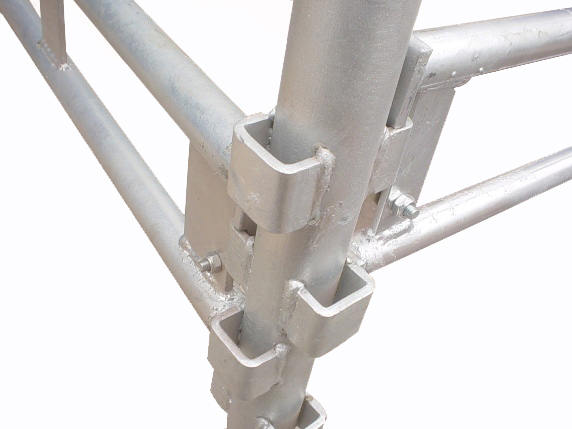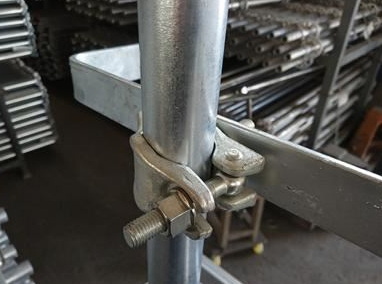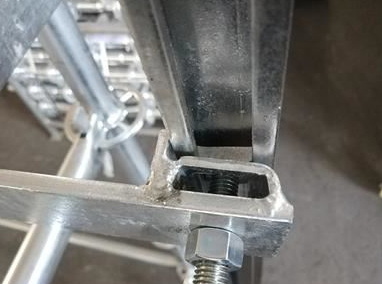Content Menu
● Overview of the QES Scaffold System
● Key Features of the QES Scaffold System
● Installation Process
>> Step 1: Site Preparation
>> Step 2: Setting Up the Base
>> Step 3: Erecting Vertical Posts
>> Step 4: Adding Horizontal Members
>> Step 5: Completing the Scaffold Structure
● Safety Considerations
● Applications of the QES Scaffold System
● Best Practices for Maximizing Stability and Efficiency
>> Regular Training Sessions
>> Utilize Proper Tools
>> Conduct Pre-Installation Checks
>> Monitor Weather Conditions
>> Maintain Clear Communication
● Conclusion
● FAQ
>> 1. What materials are used in the QES Scaffold System?
>> 2. How quickly can I assemble a QES scaffold?
>> 3. Are there specific load limits for different components?
>> 4. Can I use QES scaffolds on uneven ground?
>> 5. Is training required before using the QES Scaffold System?
● Citations:
The QES Scaffold System, known for its Quick Erect Scaffolding capabilities, is designed to provide a reliable and efficient solution for various construction projects. This system is engineered to enhance stability and facilitate swift assembly, making it a preferred choice among contractors. In this article, we will detail the installation process of the QES Scaffold System, highlighting best practices for maximizing stability and efficiency. We will also explore its features, applications, and safety considerations.

Overview of the QES Scaffold System
The QES Scaffold System is a modular scaffolding solution that allows for quick assembly and disassembly. It consists of a limited number of components that can be easily handled by workers, making it ideal for both small and large-scale projects. The system is designed with safety and efficiency in mind, incorporating features that reduce the risk of accidents while enhancing productivity on site.
Key Features of the QES Scaffold System
- Modular Design: The QES system consists of posts and horizontals that can be configured in various ways to suit different project requirements.
- Quick Assembly: The system is designed for rapid erection without the need for loose parts, allowing workers to set up scaffolding quickly.
- Corrosion Resistance: Components are galvanized for maximum protection against corrosion, ensuring longevity even in harsh environments.
- Versatile Configuration: The rings on the posts have multiple openings, enabling various configurations to meet specific needs.
- Enhanced Stability: The wedge connector design ensures a firm connection between horizontal members and posts, creating a stable structure.
Installation Process
Installing the QES Scaffold System requires careful planning and execution to ensure safety and efficiency. Below are the steps involved in installing this scaffolding system:
Step 1: Site Preparation
Before installation begins, it is essential to prepare the site:
1. Assess Ground Conditions: Ensure that the ground is level and stable. If necessary, make adjustments using adjustable bases to accommodate any unevenness.
2. Clear the Area: Remove any debris or obstacles from the installation area to create a safe working environment.
3. Gather Tools and Materials: Collect all necessary tools (e.g., spirit level, hammer) and components of the QES scaffold system.
Step 2: Setting Up the Base
1. Lay Out Base Positions: Mark the intended positions for four adjustable bases at each corner of the scaffold area.
2. Install Adjustable Bases: Place adjustable bases at each marked position. Start from the highest point of the ground to ensure proper leveling.
3. Attach Base Collars: Place base collars over each adjustable base. Ensure that one slot on each collar aligns with the direction of bearers.
4. Connect Bearers and Runners: Attach bearers horizontally between base collars using locking rings. Insert runners as required based on your scaffold design.
5. Leveling: Use a spirit level to check that all components are level before securing them in place with wedges.
Step 3: Erecting Vertical Posts
1. Install Vertical Posts: Insert vertical posts into base collars. Ensure they are securely locked in place using wedges.
2. Check Alignment: Use a level to ensure that all vertical posts are straight and aligned properly.
3. Add Diagonal Braces: Install diagonal braces between posts to enhance stability during construction.
Step 4: Adding Horizontal Members
1. Attach Horizontals: Connect horizontal members (bearers) at desired heights using locking rings on vertical posts.
2. Secure Connections: Ensure all connections are tight and secure by tapping wedges into place firmly.
3. Check Stability: After adding horizontal members, check again for stability using a level.
Step 5: Completing the Scaffold Structure
1. Continue Building Upward: Repeat steps 3 and 4 until you reach the desired height for your scaffold structure.
2. Install Guardrails: Ensure guardrails are installed along open sides and ends of platforms using bearers as guardrailing.
3. Final Inspection: Conduct a thorough inspection of all connections, levels, and stability before allowing personnel onto the scaffold.

Safety Considerations
Safety is paramount when working with scaffolding systems like QES:
- Training: Ensure all workers involved in the installation are adequately trained on safety protocols and scaffold use.
- Personal Protective Equipment (PPE): Workers should wear appropriate PPE such as helmets, gloves, and harnesses when working at heights.
- Regular Inspections: Conduct regular inspections of scaffold structures throughout their use to identify any potential hazards or wear.
- Load Limits: Adhere strictly to load limits specified for each component of the QES Scaffold System to prevent overloading.
Applications of the QES Scaffold System
The versatility of the QES Scaffold System makes it suitable for various applications:
- Construction Projects: Ideal for residential and commercial building projects where quick access is required at different heights.
- Maintenance Work: Useful in maintenance tasks where temporary access platforms are needed for repairs or inspections.
- Event Staging: Can be used to create temporary structures for events such as concerts or exhibitions due to its quick setup capabilities.
- Industrial Applications: Suitable for industrial settings where workers need access to elevated areas safely and efficiently.
Best Practices for Maximizing Stability and Efficiency
To ensure maximum stability and efficiency during installation and use of the QES Scaffold System, consider implementing these best practices:
Regular Training Sessions
Conduct regular training sessions for all personnel involved in scaffolding work. This ensures everyone understands how to properly assemble, disassemble, and inspect scaffolding systems while adhering to safety protocols.
Utilize Proper Tools
Always use appropriate tools during installation—such as spirit levels, hammers, wrenches, and measuring tapes—to ensure precise assembly that meets safety standards.
Conduct Pre-Installation Checks
Before beginning any installation work, conduct pre-installation checks on all components to ensure they are free from defects or damage that could compromise structural integrity once erected.
Monitor Weather Conditions
Weather can significantly impact scaffold stability; always monitor conditions such as wind speed or rain before allowing personnel onto scaffolds—especially during high winds or storms which may require temporary disassembly until conditions improve.
Maintain Clear Communication
Establish clear communication channels among team members during assembly processes; this includes signaling when lifting heavy components into place or ensuring everyone is aware before moving equipment around on-site.
Conclusion
The QES Scaffold System offers an efficient solution for scaffolding needs across various industries. Its modular design allows for quick assembly while ensuring maximum stability during use. By following proper installation procedures and adhering to safety guidelines, contractors can effectively utilize this system to enhance productivity on construction sites.
Investing time in training workers on proper installation techniques will yield significant benefits in terms of safety and efficiency. As construction demands continue to evolve, systems like QES will remain integral in providing reliable access solutions while maintaining high safety standards.

FAQ
1. What materials are used in the QES Scaffold System?
The QES Scaffold System is primarily made from galvanized steel components designed for durability and corrosion resistance.
2. How quickly can I assemble a QES scaffold?
The modular design allows for rapid assembly; experienced teams can erect a basic scaffold structure within hours depending on complexity.
3. Are there specific load limits for different components?
Yes, each component has specified load limits; it's essential to consult manufacturer guidelines before use to avoid overloading any part of the system.
4. Can I use QES scaffolds on uneven ground?
Yes, adjustable bases allow adaptation to uneven surfaces; however, care must be taken during setup to ensure stability at varying heights.
5. Is training required before using the QES Scaffold System?
Yes, proper training is essential for all personnel involved in assembly or disassembly to ensure safety standards are met during operations.
Citations:
[1] https://freedomscaffold.squarespace.com/s/QES_Safety_Rules__910.pdf
[2] https://www.prairiesupply.com/rental/concrete-forming-shoring/scaffolding/qes-scaffold
[3] https://www.wm-scaffold.com/types-of-scaffolding/
[4] https://www.alibaba.com/showroom/qes-scaffold.html
[5] https://trichy.bhel.com/mm/SD_MECH_SPEC/05a-QES-MHS_HEQ_075_01.pdf
[6] https://www.okorder.com/p/plastic-formwork-concrete-formwork-qes-scaffolding-scaffolding-prop-jack-with-new-design_934514.html
[7] https://brandsafway.com/uploads/files/orn203_bsl_systems_technical_manual.pdf
[8] https://www.wm-scaffold.com/wedge-lock-scaffolding/






















